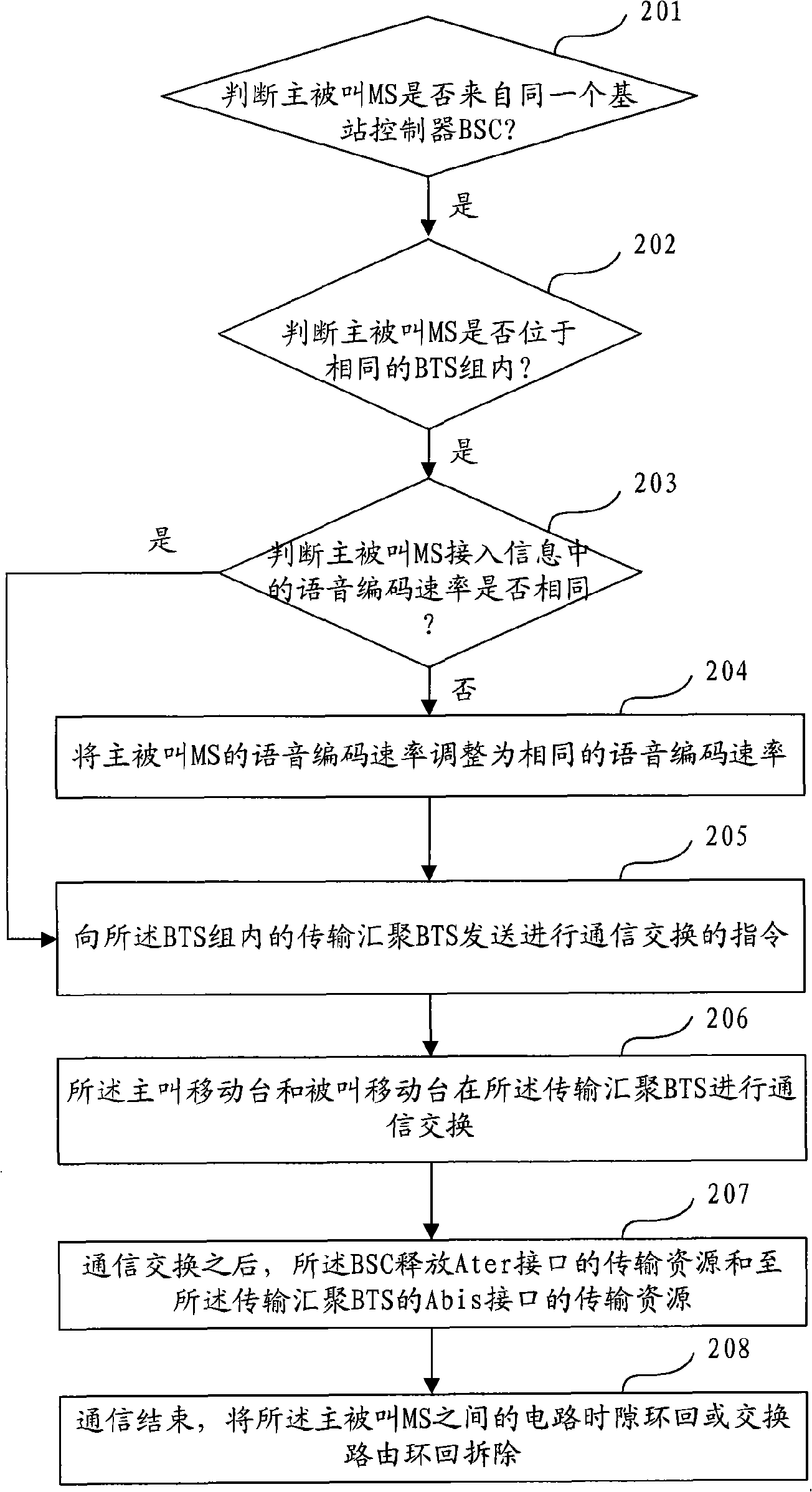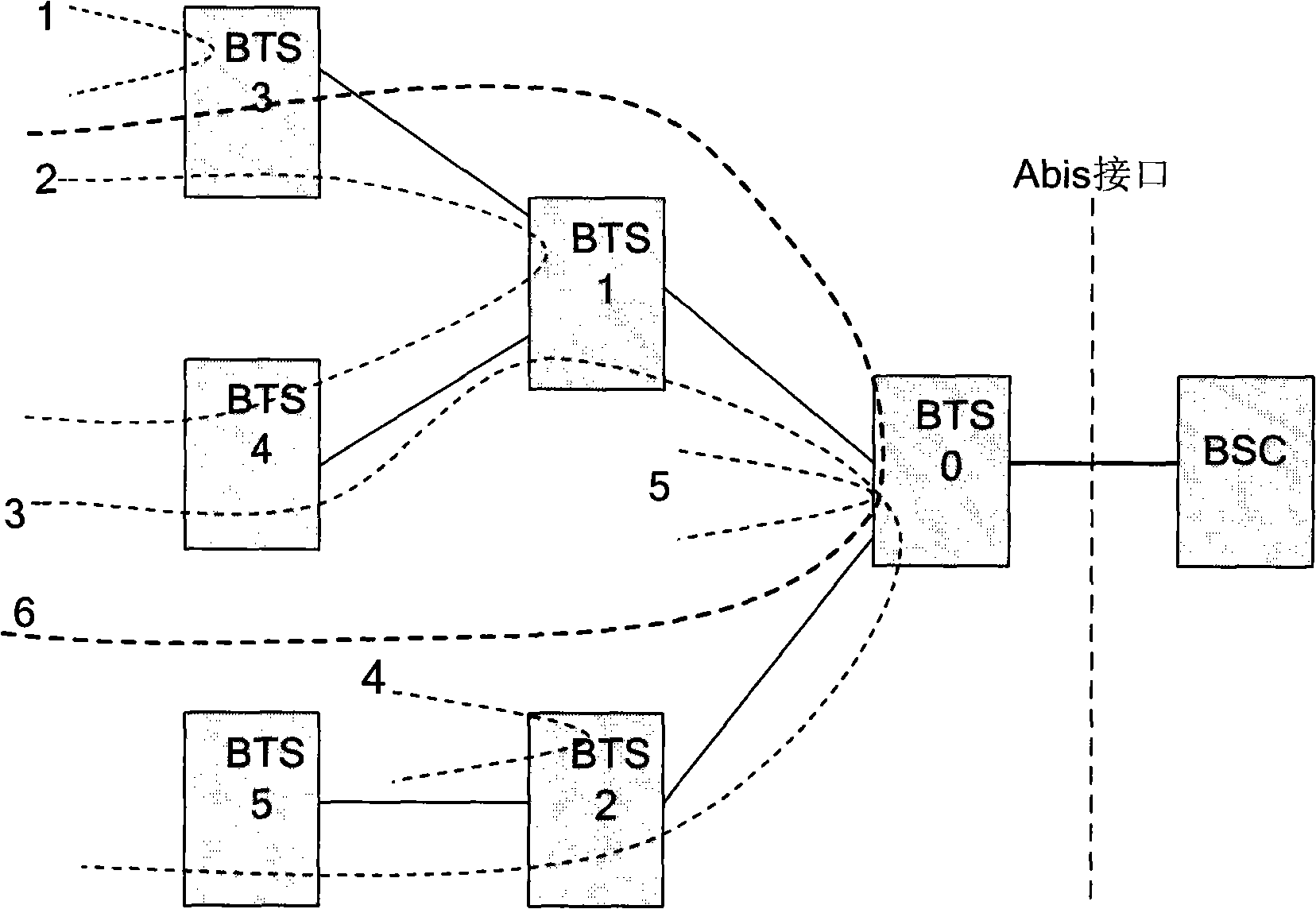Method for communication exchange in message receiving and sending station of base station, and subsystem of base station
A technology for base transceiver station and communication switching, applied in the field of methods and base station subsystems, can solve the problems of large delay, reduced voice quality, and existing Abis interface transmission resources, etc., to save transmission bandwidth, reduce transmission delay, and improve Effects of voice quality
- Summary
- Abstract
- Description
- Claims
- Application Information
AI Technical Summary
Problems solved by technology
Method used
Image
Examples
Embodiment 1
[0084] Embodiment one, such as Figure 4 as shown, Figure 4 It is a schematic diagram of communicating and exchanging in the same BTS under the IP mode, and the method of the first embodiment includes:
[0085] Step 401, the BSC judges that the calling and called MSa and MSb are under the same BTS, specifically as follows Figure 4 As shown, it can be under BST1.
[0086] Step 402, the BSC determines that the speech coding rates in the access information of the calling mobile station and the called mobile station are the same, or if the speech coding rates in the access information of the calling mobile station and the called mobile station are different , adjust the speech coding rates of the calling and called mobile stations to the same rate.
[0087] Step 403, the BSC sends an instruction for communication exchange to the BTS1, the instruction carries an IWF table, and the information of the IWF table, such as:
[0088] uplink speech frame
downlink speech...
Embodiment 2
[0092] Embodiment two, such as Figure 5as shown, Figure 5 It is a schematic diagram of communication exchange in different BTSs, the method of the second embodiment includes:
[0093] Step 501, the BSC judges that the calling mobile station MSa and the called mobile station MSb come from different BTSs, and these different BTSs can communicate with each other through the IP transmission network, specifically as Figure 5 As shown, MSa may come from BTS1, MSb may come from BTS3, and BTS1 and BTS3 may communicate through an IP transmission network.
[0094] Step 502, the BSC determines that the speech coding rates in the access information of the calling mobile station and the called mobile station are the same, or if the speech coding rates in the access information of the calling mobile station and the called mobile station are different , adjust the speech coding rates of the calling and called mobile stations to the same rate.
[0095] Step 503, the BSC sends an instruc...
Embodiment 3
[0101] Embodiment three, such as Figure 6 as shown, Figure 6 It is a schematic diagram of performing communication exchange at the IP convergence BTS, the method of the third embodiment includes:
[0102] Step 601, the BSC judges that the calling mobile station MSa and the called mobile station MSb come from different BTSs, and these different BTSs are in different IP transmission networks, but they can be aggregated through IP transmission and converged BTSs for transmission and intercommunication, specifically as follows Figure 6 As shown, it may be: MSa comes from BTS1, MSb comes from BTS3, and BTS1 and BTS3 can communicate with each other through IP transmission and aggregation BTS.
[0103] Step 602, the BSC determines that the speech coding rates in the access information of the calling mobile station and the called mobile station are the same, or if the speech coding rates in the access information of the calling mobile station and the called mobile station are diff...
PUM
 Login to View More
Login to View More Abstract
Description
Claims
Application Information
 Login to View More
Login to View More - R&D
- Intellectual Property
- Life Sciences
- Materials
- Tech Scout
- Unparalleled Data Quality
- Higher Quality Content
- 60% Fewer Hallucinations
Browse by: Latest US Patents, China's latest patents, Technical Efficacy Thesaurus, Application Domain, Technology Topic, Popular Technical Reports.
© 2025 PatSnap. All rights reserved.Legal|Privacy policy|Modern Slavery Act Transparency Statement|Sitemap|About US| Contact US: help@patsnap.com



